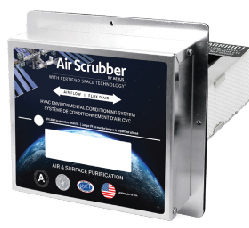Indoor Air Quality (IAQ) refers to the air quality within and around buildings and structures, especially as it relates to the health and comfort of building occupants. Understanding and controlling common pollutants indoors can help reduce your risk of indoor health concerns. Long exposure to these pollutants and contaminants can be harmful over time. That’s why it’s important to be aware of the variety of airborne contaminants in your home. These are called VOCs, and here you will learn all about them.
What are VOCs?
Volatile Organic Compounds (VOCs), sometimes known as chemical pollutants, are gases emitted by many of the goods we use to build and maintain our homes. These gases can be harmful or damaging to our health. Many of these pollutants are colorless and are odorless at low levels. They can be released into the environment during the use as well as storage of products.
What Causes High VOC Levels?
VOCs are both human-made and naturally occurring. Exposure to them is unavoidable. They are very common and are found almost everywhere, but are highly-concentrated in enclosed spaces like our homes. The goods that release higher VOCs include furniture, pesticides, cleaning products, air fresheners, flooring and more. One of the most well-known harmful VOC is perchloroethylene, which is commonly used for dry cleaning. This gas is breathed in when around or wearing dry-cleaned clothing.
Why is it important to monitor VOC levels?
VOC levels must be kept as low as possible, as they pose a severe threat to our health. Long term exposure to low VOCs can raise the risk of health issues ranging from respiratory to headaches and irritations. However, long term exposure of high VOCs could lead to liver damage, kidney damage, and even cancer. We believe it is important to invest in a VOC reader to ensure maintenance of low VOC levels.
What is a healthy amount of VOC?
VOC is typically measured in ppm (parts per million) or ppb (parts per billion). The lower this number, the better! The ideal space will have a ppm of 0.065 or lower. However, it is still okay to have a VOC level of 0.065-0.22 ppm. Any higher than 0.22 ppm should be taken care of, either with proper ventilation, removal of the source, or with IAQ products.
How Do I Reduce VOC Levels at Home?
Proper storage of VOCs and increased ventilation can improve your IAQ. However, IAQ products like air purifiers can significantly improve air quality. A lot of these products can be attached directly to your HVAC system ductwork for all-around decontamination. These products reduce viruses, bacteria, and other contaminants in the ambient air and on surfaces throughout your home.
Call Poorman’s Heating & Air for IAQ Products
Poorman’s carries a wide variety of air quality products, ranging from mobile, to ductless, to whole-house air purification products. The new Air Scrubber by Aerus is one of our featured products, which destroys up to 99% of surface and airborne contaminants. Click here for more info on Aerus products. Poorman’s has an abundance of air quality products, including Reme Halo and iWave. Click here for more info about iWave. Check out a variety of other IAQ products at Poorman’s, or call for a free quote.



